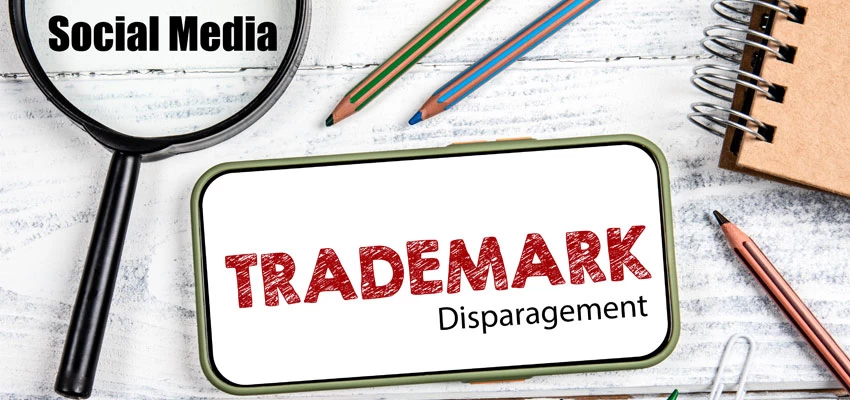A recent order passed by the Delhi High Court in favour of DPKA Universal Consumer Ventures and others (the Defendants), rejecting the plea of interim injunction by Lotus Herbals (the Plaintiff) against the former’s use of ‘Lotus Splash’, has garnered a lot of attention. The decision discusses the question of infringement, with specific reference to Section 30(2)(a) of the Trade Marks Act, 1999 (‘Act’) at length. This article discusses this interim order and analyses the jurisprudence on Section 30(2)(a) of the Act.
Interim order in Lotus Herbals v. DPKA[1]
Brief background and facts:
The Plaintiff claimed their brand LOTUS has been in business since 1993 and has become a household name in terms of offering skincare products. The Plaintiff further holds several trademark and copyright registrations over the mark ‘LOTUS’ per se and other ‘LOTUS’ formative marks.
The Plaintiff instituted a trademark infringement suit against the Defendants i.e., the company behind Deepika Padukone’s co-owned brand ‘82°E’, for its use of the name/logo ‘Lotus Splash’ for a face cleanser, which according to the Plaintiff infringes their registered ‘LOTUS’ formative marks and creates a false sense of association between the products of both the entities.
Plaintiff’s contentions:
- The Defendants’ use of the word ‘Lotus’ conjoined with ‘Splash’ as a trademark, despite being well aware of the pre-existing and registered ‘LOTUS’ marks of the Plaintiff, amounts to infringement under Section 29 of the Act.
- The Defendants’ use of ‘Lotus Splash’ on the packaging of their facial cleanser is in a trademark sense. The actual brand name i.e., ‘82°E’ (as claimed by the Defendants) has been constrained at the bottom of the actual product bottle. Subsequently, ‘Lotus Splash’ would be perceived as the actual brand name because the point of reference for a consumer is the name of the mark and not its ingredient. The invoices of the Defendants depict that the Defendants, despite trying to prove otherwise, have been selling the product as ‘Lotus Splash conditioning cleanser with lotus and bioflavonoids’ with no mention whatsoever of the brand name ‘82°E’. The Defendants’ social media handles and official website further substantiate that the Defendants are using ‘Lotus Splash’ as a trademark and not in a descriptive sense, barring them from claiming protection under Section 30(2)(a) on the grounds that ‘Lotus’ per se is descriptive of its facial cleanser that contains lotus extract.
- Additionally, like ‘Lotus Splash’, the Defendants are also offering similar goods under similar marks ‘Ashwagandha Bounce’ and ‘Patchouli Glow’ (highlighting the primary ingredients in the products thereunder). The Plaintiff contended that not only did the Defendants conceal the fact that they applied for registration of these similar marks ‘Ashwagandha Bounce’ and ‘Patchouli Glow’ by themselves as trademarks, but the same is also indicative that the use of ‘Lotus Splash’ by the Defendants is also in a trademark sense.
Defendant’s contentions:
- Claiming to be entitled to the benefit of Section 30(2)(a) of the Act, the Defendants took recourse to the argument that lotus being the star ingredient of the ‘Lotus Splash’ face cleanser, the mark ‘Lotus Splash’ is an indicator of the products constituents. Thus, the use is well within the governing legal principle of Section 30(2)(a) i.e., a registered trademark is not infringed where use is descriptive.
- With respect to the Plaintiff’s contention that the Defendants have sought registration for other similar marks ‘Ashwagandha Bounce’ and ‘Patchouli Glow’, the Defendants asserted that ‘even if such applications were filed seeking registration of descriptive trademark, they could at worst be regarded as misconceived, and could not operate as estoppel against the defendants in the present case’.
Issue before the Court
The Court opined on the following key issues in the interim order in the present matter:
- Whether the use by the Defendants amounts to infringement under Section 29 of the Act?
- Whether the Defendants are liable to claim the defence of Section 30(2)(a) of the Act i.e., a registered trademark is not infringed where ‘the use in relation to goods or services indicates the kind, quality, quantity, intended purpose, value, geographical origin, the time of production of goods or of rendering of services or other characteristics of goods or services’?
Decision of the Court
With regard to the first issue, the Single Judge of the Delhi High Court reiterated the three cumulative conditions required to be satisfied for a finding of infringement under Section 29(2)(b) of the Act i.e., a) rival marks must be similar b) use in respect of identical or similar goods/ services c) and because of the existence of these two factors, there must be a likelihood of confusion on the part of the public or likelihood of the public believing an association between the rival marks. The Court opined that in the present scenario, it is evident that the goods under the Plaintiff’s registered mark ‘Lotus’ and the Defendants’ unregistered ‘Lotus Splash’ mark are allied and identical. Additionally, the prominent use of ‘Lotus’ in the Defendants’ mark could lead consumers to associate their product with the Plaintiff, thereby establishing a prima facie case for infringement within the meaning of Section 29 of the Act.
As regard the second issue, the Single Judge referred to the relevance of Section 30(2) of the Act in the present scenario. The Court observed that the Plaintiff’s argument that the use of ‘Lotus Splash’ does not qualify for the defence of Section 30(2)(a) of the Act owing to its ‘suggestive’ rather than ‘descriptive’ nature, was inadequate. The Court reasoned that the Defendants’ product contains lotus as a primary ingredient and the same has been consciously and extensively advertised by the Defendants. The same is also emphatically underscored in their product description – ‘conditioning cleanser with lotus and bioflavonoid’, which is placed immediately below the ‘Lotus Splash’ mark on their packaging. Thus, according to the Court, an ordinary consumer would get the impression that the product contains lotus as one of its key ingredients. Further, the Court held that the brand name ‘82°E’ appears at the lower edge of their packaging of the ‘Lotus Splash’ cleanser, thereby indicating that the trademark of the Defendants is ‘82°E’ and not ‘Lotus Splash’.
Consequently, the Court allowed the Defendants to claim recourse of Section 30(2)(a) of the Act and rejected the grant of the interim injunction in favour of the Plaintiff. Additionally, owing to the dissimilarity in appearance and the price points of the rival products as well as the sole similarity between them being the common term ‘Lotus’, the Court held that the Defendants’ use of the ‘Lotus Splash’ mark does not amount to passing off the Plaintiff’s mark.
Jurisprudence on Section 30(2)(a)
The tussle between use in a trademark sense vs. descriptive use is not new to Indian Courts. One such prominent litigation was the case of Marico Limited v. Agro Tech Foods Limited[2], wherein the Delhi High Court held that the Plaintiff’s rights in ‘LOSORB’ could not restrict the Defendant from using ‘WITH LOW ABSORB TECHNOLOGY’ on its packaging, as the same was merely descriptive use of normal English words that indicate the Defendant’s goods i.e., oil. Further, the Court also noted that the Defendant is ‘prominently’ using its own trademark ‘Sundrop’ on its packaging i.e., in a much larger size than ‘LOW ABSORB TECHNOLOGY’ and this indicates the bonafides of the descriptive use.
Meanwhile in Anchor Health and Beauty Care v. Procter & Gamble[3], the Delhi High Court rejected the defense of Section 30(2)(a) asserted by the Defendant, one of the reasons being that their packaging showed that the impugned mark ‘ALL-AROUND PROTECTION’ was being used as a standalone mark and not to describe any quality of the product, which are described separately on the packaging. Further, the Defendant had also applied for the mark ‘ALL-AROUND PROTECTION’ for registration, thereby proving its intention to use it in trademark sense and not merely descriptively.
Similarly in Jagdish Gopal Kamath v. Lime and Chilli Hospitality Services[4], the Bombay High Court noted that, the fact that the Defendant applied for registration for ‘Café Madras’ served as conclusive evidence of its intention to use it in trademark sense, and not merely descriptively to connote services of a Café originating in Chennai (as claimed by the Defendant).
In the matters of Central Park Estates v. Samvara Buildtech[5] and Cadila Healthcare Ltd. v. Gujarat Cooperative Milk Marketing Federation[6], the Delhi High Court took a more stabilizing approach: in both matters the Court agreed that the Defendants were using their impugned marks as mere descriptors (CENTRAL PARK for real estate services and SUGAR FREE for desserts, respectively), however to ‘balance the equities’ the Defendants were directed to use the descriptors less conspicuously. This was specifically to be done by reducing the font size of the descriptors, to make them smaller than their actual trademark on the packaging. The reasoning for this was comprehensively advanced in Cadila (supra), wherein the Court noted that the get up of the Defendant’s packaging is such that the entire focus is on the descriptor ‘SUGAR FREE’ so much that the actual trademark ‘AMUL’ gets overshadowed. While the average consumer would be well-informed about the origin of the goods, the Court noted however that the possibility of confusion with Plaintiff Cadila’s ‘SUGAR FREE’ brand could not be ruled out. Thus, the Defendant was restrained from using ‘SUGAR FREE’ in the larger font size but was free to use it as part of a sentence or catchy legend.
Amongst the multitude of decisions by the Delhi High Court on Section 30(2)(a) of the Act, a more unique conclusion was reached in Piruz Khambatta v. Soex India Pvt. Ltd.[7]. Here, the Defendant was offering 47 flavours for its tobacco products, one of them being ‘Pan Rasna’ i.e., containing the well-known registered RASNA trademark of the Plaintiff. The Court held that this was not merely descriptive use but rather used as a ‘sub-brand’ or ‘sub-mark’.
While there are precedents galore in Indian jurisprudence on Section 30(2)(a), a reference may also be made to the jurisprudence of United States, which offers an insight into certain additional factors that may also be considered on this issue.
In Freelancer International Pty. Ltd. v. Upwork Global, Inc.[8], the US Court of Appeals, Ninth Circuit reiterated two factors to ascertain use of a mark in a trademark sense, the first of which is essentially a reiteration of the Indian approach and the second is an additional insight:
(i) whether the term is used as a symbol to attract public attention, which can be demonstrated by the lettering, type style, size and visual placement and prominence of the challenged words. (ii) whether the infringing user undertook precautionary measures such as labeling or other devices designed to minimize the risk that the term will be understood in trademark sense.
The US Courts in the cases of Engineered Mech. Serv. v. Applied Mech. Technology[9] and TCPIP Holding Co., Inc. v. Haar Communications, Inc[10] further placed reliance on the publicity materials and advertising brochures of the Defendants, such that the use of a mark was termed not descriptive if it was prominently placed on the said promotional materials and if the products were referred to by the mark.
Analysis
From the above discussion, it can be concluded that several factors go into concluding descriptive use under Section 30(2)(a) of the Act:
- Packaging : whether the impugned mark is displayed more conspicuously than the actual brand of the Defendant on its packaging i.e., in larger font, capitals, bold, stylized, and placed prominently. A highly conspicuous mark becomes a symbol to attract public attention, and this takes away from the descriptiveness of its use.
- Promotion: As observed in US jurisprudence, particular emphasis may also be laid on the advertisement/ promotional material of the Defendant’s products, by scrutinizing whether the impugned mark is being placed prominently on such material, such that the goods are being referred to by the impugned mark.
- Sub-brand: An additional factor to be considered is whether the use by the Defendant of the impugned mark is such that it appears to be a sub-brand and not merely a descriptor of the main brand of the Defendant.
- Estoppel vide trademark applications: As repeatedly asserted by the Courts, if the Defendant is found to have sought registration for the same mark it asserts as descriptive, at any point, the same could constitute admission that the Defendant intends to use it as a trademark.
Consequently, in availing the defense of Section 30(2)(a), much depends upon the conduct of the Defendant. Section 30(2)(a) of the Act essentially operates on the premise that a person intending to take advantage of another’s trademark would manifest that intention in some discernable form or manner while doing business under his or her own mark. Further, in cases where the use of a mark is genuinely descriptive but also likely create confusion, the Courts have adopted the ‘balancing of equities’ approach by refusing infringement but also directing the Defendant to use the descriptor less noticeably. This approach operates as a safeguard in favour of the interest of the associated parties and most importantly, the relevant public.
Conclusion
The interim order in Lotus Herbals v. DPKA and the jurisprudence around Section 30(2)(a) of the Act brings to fore, an important issue of gatekeeping i.e., trademark owners should not be allowed to gatekeep dictionary words/ phrases that are descriptive in nature of any goods/ services, even when such terms are registered. The authors opine that Section 30(2)(a) of the Act should most definitely be interpreted in such a manner to prevent the undesirable consequence of trademark owners using their IP rights to justify anticompetitive and exploitative behavior. The interim order in the instant case is appreciable for giving full effect to this intention behind Section 30(2)(a). There is however one aspect which still leaves room for some debate in the facts of the instant matter, i.e., the placement of ‘Lotus Splash’ more conspicuously on the packaging of Defendants’ product than their actual brand 82°E, which appears meekly at the lower edge. It is not fully clear from the interim order whether the Court considered the promotional materials by the Defendants to ascertain whether the Defendants are advertising ‘Lotus Splash’ as a sub-brand rather than a mere descriptor.
[The first author is a Partner while other two authors are Associates in IPR practice at Lakshmikumaran & Sridharan Attorneys]
- [1] CS (COMM) 454/2023, I.A. 12308/2023, I.A. 17542/2023 and I.A. 19426/2023.
- [2] (2010) 174 DLT 279
- [3] (2014) 59 PTC 105
- [4] (2015) 4 AIR Bom R 272
- [5] 2023 SCC OnLine Del 1932
- [6] (2008) ILR 1 Delhi 1242
- [7] (2012) 193 DLT 670
- [8] 20-17196 (9th Cir. Jun. 22, 2021)
- [9] 584 F. Supp. 1149
- [10] 244 F.3d 88 (2d Cir. 2001)











